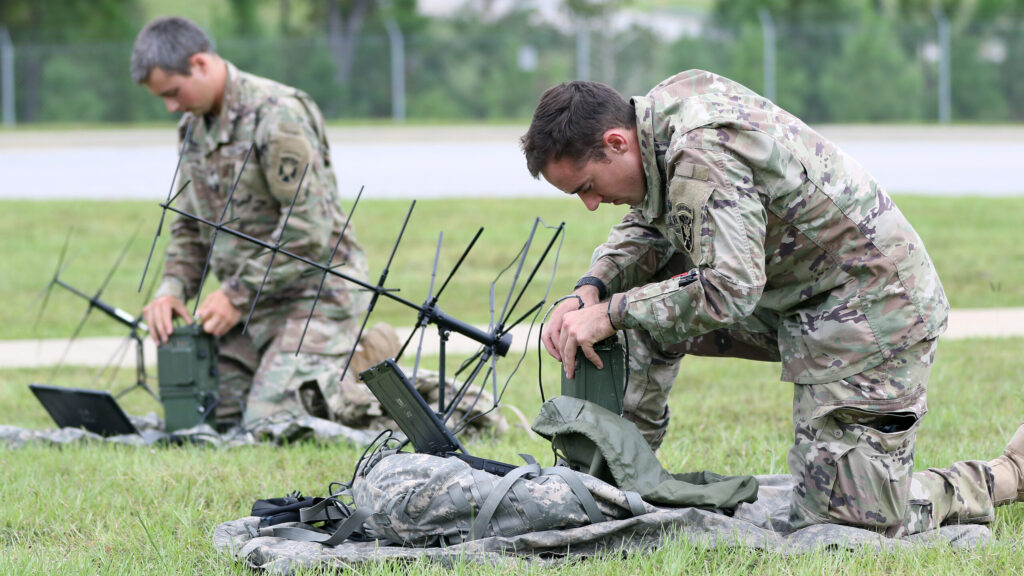THERESA HITCHENS

WASHINGTON — The Army is moving forward on its long-planned pilot program to buy satellite communications in the same way that individuals subscribe to a mobile phone plan, issuing a draft “performance work statement” to help shape industry pitches.
“There is a need for increased capacity in the SATCOM area,” Col. Shane Taylor, who is heading up the pilot for the Army’s Program Executive Office Command, Control, & Communications – Tactical (C3-T), told Breaking Defense in an interview.
The Army’s hope is “to keep up with the pace of commercial technology” in the area of satellite communications, Taylor explained, and the service is convinced that acquiring SATCOM as a “managed service” provided by a vendor is the way to ensure that goal.
“One of the big advantages of that is it allows us to keep up with new solutions as they come out,” he said. “There’s a lot of vendors in the commercial SATCOM space and so … year-to-year, there tends to be quite a bit of new technology that comes out.”
Another advantage is the ease of use for soldiers in the field, Taylor explained.
“If we did a fully managed service, what we call modem-to-modem, that would literally allow a soldier on the edge and be able to plug in his own computer device, and the rest of that is all kind of managed behind the scenes for him,” he said.
At the macro-level, the Army is working toward creating a resilient “unified network” of different types of communications, Taylor noted. “If you look into tactical space right now, we have the ability to leverage line-of-sight, beyond line-of-sight, in some place fiber, in some places Wi-Fi — those are all links, communication links, that we can leverage within the tactical space.”
SATCOM “is a very large part of that,” he stressed, but the Army has been edging up on maxing out available bandwidth from traditional vendors with satellites in geosynchronous orbit (GEO), so the service is looking to providers with constellations in low Earth orbit and medium Earth orbit using other frequency bands.
Industry vendors have until Dec. 16 to respond to the draft performance work statement for the Satellite Communications (SATCOM) as a Managed Service (SaaMS) pilot, which is available on the General Services Administration’s e-Buy website.
“Posting the draft [performance work statement] allows industry to understand what work will be required to perform on the contract and allows the government an opportunity to gain industry feedback prior to the RFP release,” the Army said in its announcement today.
The service then intends to release a formal request for proposals (RFP) in January, through the existing Commercial Satellite Communications (COMSATCOM) Subscription Services contract managed by Defense Information Systems Agency and the Defense Information Technology Contracting Organization.
The Space Force, in its recently released fiscal 2023 forecast of COMSATCOM requirements, estimates the value of the pilot to be less than $100 million.
“This means that’s what we could go up to, but we can’t exceed, that amount,” Taylor noted.
The plan is to launch the 12-month pilot in the third quarter of FY23, he said.
“In FY22, we did a considerable amount of market research, including a lot of demos, dozens of demos, that vendors responded to. They came in and provided us kind of an overview of their capabilities. We used that information to draft up the PWS and develop what we thought was an executable strategy in FY23,” Taylor said.
No comments:
Post a Comment